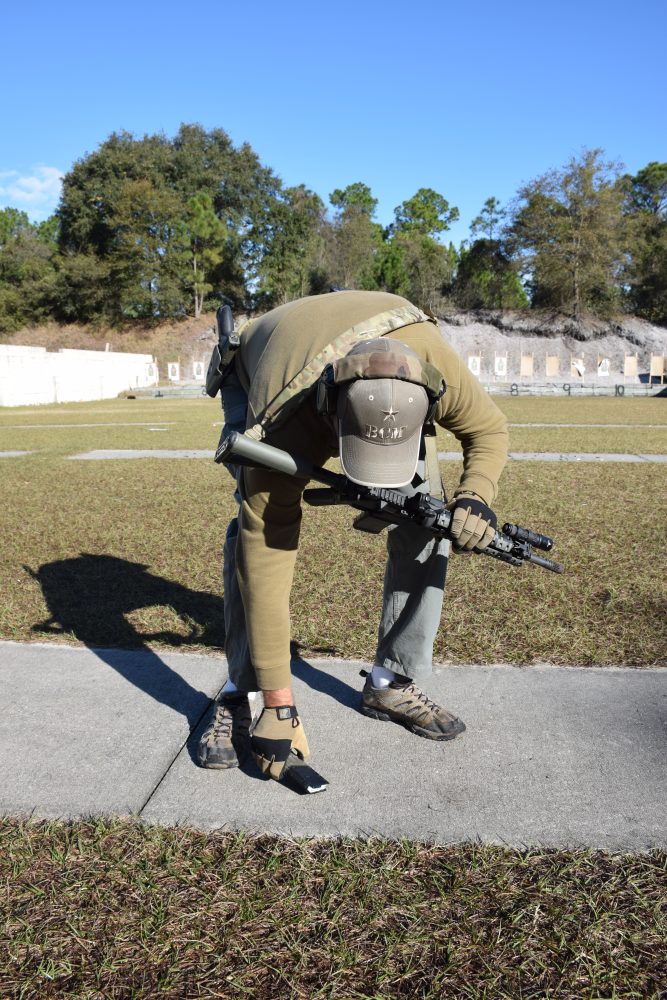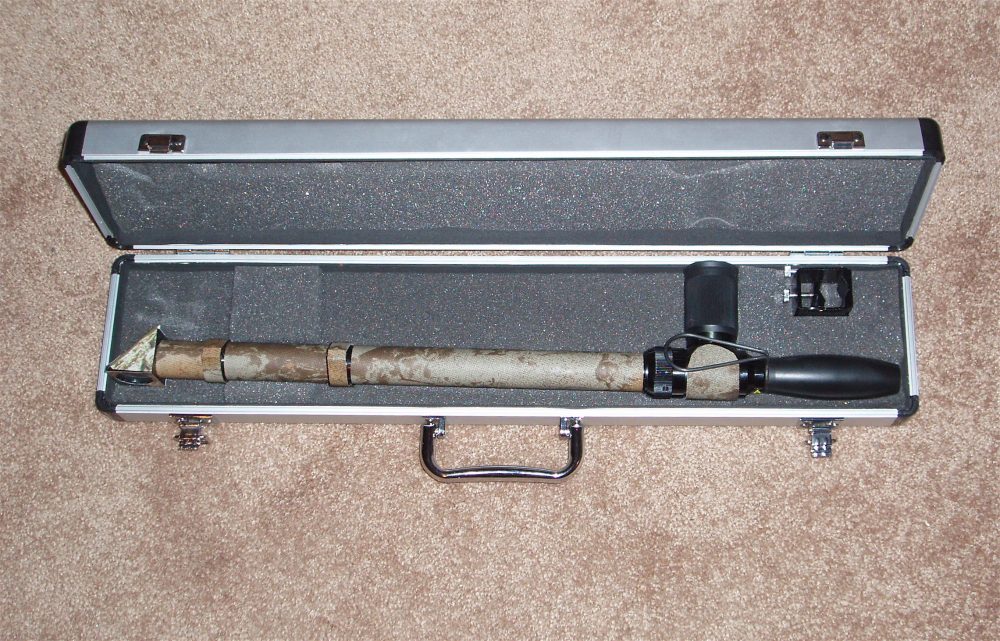
The Four Safety Rules exist for a reason. We—empirical WE—deal with firearms, which by definition are deadly weapons. Any lack of concentration when handling a firearm can—and often does—lead to tragedy.
The Four Rules are:
- All guns are always loaded.
- Don’t let the muzzle cover anything you are not willing to destroy. This includes your own body parts.
- Finger straight and outside of the trigger guard until your sights are on target and you are ready to shoot.
- Be sure of your target. Consider the background.
All the rules are important, but sometimes we need to redefine issues. If adhered to, the four safety rules will ensure that people/objects not deserving holes won’t receive them. While the rules are well known among a core group, they are clearly ignored by many, and this is confirmed by a plethora of YouTube videos.
Table of Contents
UNINTENTIONAL DISCHARGES
There are precious few Accidental Discharges (AD), as they occur only when there is a mechanical defect in the system. The majority of unintentional discharges are Negligent Discharges (ND). That is, the person in possession of the firearm engages in behavior that is reckless or negligent, resulting in an unintentional discharge. No ND is good, but there are degrees of NDs.
For example, firing a negligent shot into your body is bad. Firing a negligent shot into someone else is worse, by an order of magnitude. A negligent shot fired downrange during a shooting exercise is not a good thing, but it can be a strong teaching/learning point.
We seem to learn much more from our mistakes than our successes, and that may be what many would consider a wake-up call. To have an ND, the possessor of the firearm is incompetent, stupid, or unable to function correctly.
In these cases, the possessor has a loaded firearm, though many will wail, “Whaaaa, I didn’t know the gun was loaded,” as if that in some manner excuses their incompetence or stupidity. This is a Rule 1 violation.
He also has his finger on the trigger at an inappropriate time—that is, not when he has a target and is intending to shoot, but at some other time. This is a Rule 3 violation. If it strikes himself, or worse another person, it is a Rule 4 violation. The malfeasant had no target when the firearm was discharged.
If you want to hang with the big boys, you need to be safe, competent and switched on. Maintaining situational awareness under all circumstances enhances your ability to win the fight (and live through class).
You may violate Rule 1, Rule 3 and Rule 4 without injury to yourself or a third person only if the muzzle is pointed in a “safe” direction, which of course is Rule 2. While the majority of NDs are the result of incompetence or stupidity, here I will look at one’s inability to function. My current frame of reference is on the range training, but it applies across the board.
We have turned into a nation of sedentary, out of shape, overweight blivets. With affirmative action, no one left behind and no one is allowed to win for fear of upsetting anyone, receiving commands to do something upsets more folks than you can believe…
Because the majority of people are in less than optimal shape, any physical action debilitates them more rapidly than those in reasonable shape. In shape or out of shape, you need to eat and drink before, during and after class. The priority goes to hydration, because without that you will sink fast. The Dietary Reference Intake (DRI) for water, set for the first time by the National Academy of Sciences in 2004, is based on the medial total water intake reported by participants in the 3rd National Health and Nutrition examination survey 1988-1994.

RECOMMENDED FLUID INTAKE
Recommendations are primarily established to prevent the harmful effects of dehydration. Fluid needs depend on several factors, including the surrounding environment, activity level, metabolic needs (diet), or individual health status. The general recommendation for healthy adults leading a relatively sedentary lifestyle in a moderate climate is to consume 74 fluid ounces (nine cups) of beverages for women, and 101 fluid ounces (three liters) of beverages for males (This is the recommendation for beverages only, not counting the water intake from foods—if we’re counting food, your demand would be higher).
Surrounding environment: As the temperature rises, water is lost through perspiration as the body works to cool down its core temperature. On the other end of the spectrum, cold temperatures and altitude result in elevated respiratory water loss, hypoxia and/or cold-induced diuresis and increased energy expenditure. All of the above increase the body’s water needs.
Exercise: Heavy work or extensive physical activity increases the water needs for two reasons: 1) More water is lost in sweat and respiration. 2) More water is necessary for the increased metabolic demand involved in physical activity.
The American College of Sports Medicine recommends drinking 13.5 to 20 ounces of fluid two to three hours prior to exercise, with an additional five to 12 ounces of fluid at 15 to 20 minute intervals throughout the duration of exercise.
Metabolic needs: about 33.8 ounces of water are necessary for every 1,000 calories in your diet.
Let’s add this up for a day on the range, considering moderate activity on a hot day for a healthy adult male, using average values:
- Three liters basic need while sedentary.
- Sixteen ounces prior to the range.
- Plus eight ounces (average) every 15 minutes on the range = 32 ounces or 1 liter per hour of actual range work
- Coffee or caffeinated sodas don’t count as beverages because the water intake is offset by the diuretic effect of the caffeine in those beverages (Yes, a certain amount of caffeine is necessary. Understand that “energy” drinks contain excessive sugar and insufficient electrolytes).
- Alternate water and beverages containing electrolytes in order to maintain a healthy level of electrolytes in your body. Moderation is the key. You can drink too much water. You must have an electrolyte replacement in your hydration regime. To not do so is inviting dehydration, which can lead to a host of problems.
“Drip irrigation” is better than “flood irrigation” for your body. Continuously consuming/sipping a few ounces of water throughout the day is much better for your body than chugging a liter every hour (which could actually flush right through and flush out electrolytes in the process).
Yes, we train on hot days as well as cold days and days when cotton-ball clouds float across impossibly blue skies. High shooter in this class was a horrifically Wounded Warrior who did the class in full battle rattle. If you are a whiner and need multiple applications of Vagisil to function, you need to re-evaluate your priorities…
THE ELIXIR OF TRAINING
In the past I tried energy drinks to keep me functional on the range. They did have some short-term benefits but were not optimal in the long run. I have also tried many sports drinks, which work better, but their high sugar content brings its own set of problems. I was introduced to Camelbak Elixir at a carbine class and jumped immediately on the Elixir train.
Elixir is sugar free and comes in both caffeinated and decaf versions. Be smart when using the high-test version. It comes in tablet form and is dissolved in water. I drink one when I wake up and one in the mid-afternoon when waves of fatigue are breaking over me, but otherwise it’s decaf.
Camelbax Elixir tastes good, which is the first step in proper hydration. Many products I have tried tasted like what resides in a cat litter box. I think enough of Elixir that I provide a tube of 12 tablets to every student attending an EAG Tactical class on the morning of TD1. And since we have been using it, hydration problems have decreased. Just an observation, purely subjective, but based on three years of observing.
Full disclosure: Camelbak—along with 16 other companies—supports EAG, which is why I have the ability to provide that tube of Elixir to everyone. However, I had purchased several mortgage payments worth of it prior to receiving their support, and as with everything else I own, if it didn’t work better than other products, I wouldn’t use any of them.
A sugar-free effervescent tablet loaded with electrolytes, Camelbak Elixir dissolves easily in water and won’t leave a sticky residue if used in a hydration system reservoir. Use one tablet for every 24 ounces of water. It comes in an easy-to-carry portable tube that contains 12 tablets, and is available in eight different flavors—some caffeinated, some decaf.
TELLTALE SIGNS
How can you tell if someone is not operating at a sufficient level to be safe and able to learn? Individuals can react in many ways, so please understand that this is a guide and not doctrine.
- Inability to process information. The shooter will shoot improper drills, sequence targets incorrectly, or continuously ask you to repeat yourself.
- The student slows down and becomes lethargic, which can manifest in various ways.
- Constantly looking at the deck when walking or standing on the line.
- When you ask them why they did something wrong, they answer, “I don’t know.”
- When you tell them they did something wrong, they give you the guppy look.
- They are always the last ones to the line and the last ones back from their targets.
- When handling their weapons or moving down to or up from intermediate or prone positions, they will be looking at the deck.
- They let their carbine hang from the sling rather than controlling it.
- Their ready position is with the rifle pointing straight down instead of just below the line of sight.
YOU’RE OUT!
None of these indicators in and of themselves means that someone is not functional, but these are clues, and you’d better believe I am profiling safety violators. The one that clinches it is when the student is not controlling their muzzle (Safety Rule 2).
Here’s a good example. Having learned early on that people will do some very stupid things with loaded weapons in their hands, I won’t let people recover dropped gear until I am sure the line is safe.
I instruct the students that when they bend over to retrieve an item, they must control their carbine. The best way to do this is to maintain a firing grip on their carbine and then keep their barrel vertical, pointed straight down. They can recover their equipment with the support hand.
If they release their firing grip and use the strong hand to pick up their dropped gear, the muzzle will cover those behind and to their sides. That is unacceptable. And what frosts the cake is, after being told they did something unsafe and are mentored on it, they do it again. At that point, they have self-selected out of the class.
When people have reached this stage, they have long since stopped learning. The only thing they want now is for it to be over. In their mind, they are struggling to
AVOIDING TROUBLE
And it is all avoidable. Get in shape. Stay in shape. Eat healthy, hydrate and have the desire and ability to learn. It really is that simple. Too often, people pay lip service to safety, and the only reason some are still alive is because they had incredible luck. We as a community cannot tolerate this type of stupidity.
The Four Rules exist for a reason, and if you don’t point the muzzle somewhere you shouldn’t, the likelihood of someone being killed or injured is decreased. In this day and age, with the media locked firmly in the hands of our enemies and with social media showing every stupid video of stupid people doing stupid things with guns, we cannot afford to permit unsafe gun handling and the resultant injuries and deaths that will follow.
Our fight is constant and we must stay vigilant. Always.
Pat Rogers is a retired Chief Warrant Officer of Marines and a retired NYPD Sergeant. Pat is the owner of E.A.G. Inc., which provides services to governmental organizations and private citizens. He can be reached at [email protected].
SOURCE:
Camelbak
(877) 404-7673
www.camelbak.com









